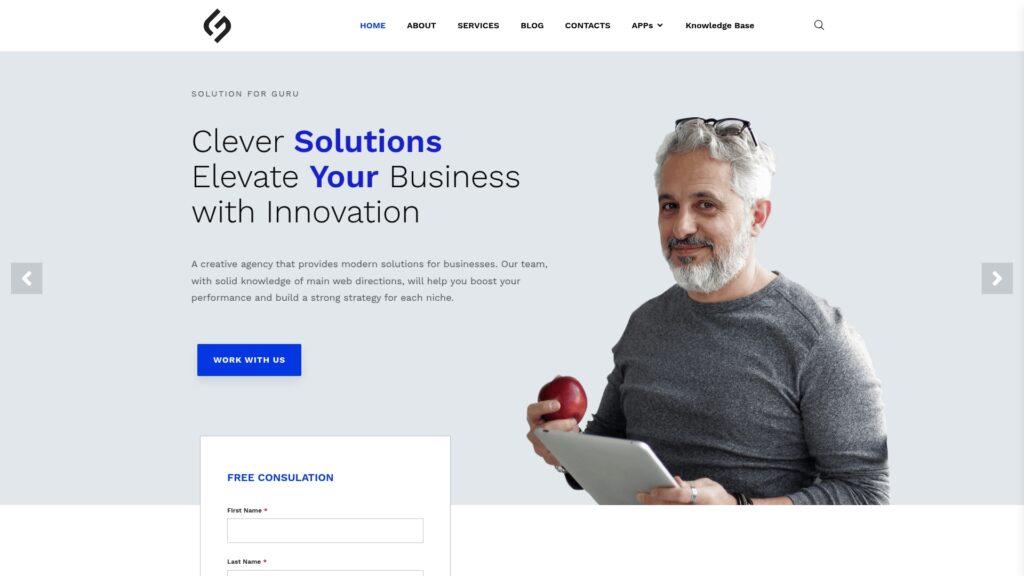Usage-Based Insurance (UBI): Is It Worth It for Safe Drivers?

In today’s rapidly evolving insurance landscape, drivers are constantly searching for ways to reduce their premiums while maintaining comprehensive coverage. Usage-Based Insurance (UBI) has emerged as a revolutionary approach that rewards safe driving habits with lower rates, fundamentally transforming how insurance companies assess risk and calculate premiums. Nevertheless, many drivers wonder whether this technology-driven insurance model truly delivers on its promises, particularly for those who already maintain excellent driving records.
Table of Contents
- Quick Summary
- What Is Usage-Based Insurance and How Does It Actually Work?
- How Do Insurance Companies Like Progressive,Next,Infinity Auto and BiBerk Implement UBI Programs?
- What Are the Main Types of Usage-Based Insurance Available Today?
- How Much Money Can Safe Drivers Actually Save with UBI?
- What Driving Behaviors Do UBI Programs Monitor and Evaluate?
- Who Benefits Most from Switching to Usage-Based Insurance?
- How Do UBI Programs Compare Across Different Insurance Providers?
- Summing up
- Frequently Asked Questions
- Benefits of Cooperation with Solution for Guru Company
Quick Summary
Usage-Based Insurance (UBI) represents a personalized approach to auto insurance that calculates premiums based on actual driving behavior rather than traditional demographic factors alone. Through telematics devices or smartphone apps, insurance companies monitor various driving metrics including mileage, speed, braking patterns, and time of day. Safe drivers can potentially save 10-40% on their premiums, though actual savings vary significantly among providers like Progressive, BiBerk, Infinity Auto, and Next Auto Insurance US. While UBI offers substantial benefits for cautious drivers with good habits, it’s essential to understand the monitoring process, privacy implications, and specific program requirements before enrolling. Ultimately, the decision depends on individual driving patterns, comfort with technology, and willingness to share driving data in exchange for potential discounts.
What Is Usage-Based Insurance and How Does It Actually Work?
Usage-Based Insurance fundamentally reimagines the traditional insurance pricing model by incorporating real-time driving data into premium calculations. Instead of relying exclusively on historical statistics and demographic information, UBI programs track actual driving behavior through advanced technology. Consequently, this approach allows insurance companies to reward safe drivers with lower rates while encouraging all policyholders to adopt safer driving habits.
The mechanics of UBI are surprisingly straightforward. After enrolling in a program, drivers either install a small telematics device in their vehicle’s diagnostic port or download a smartphone application. These technologies continuously collect data about driving patterns, including acceleration rates, braking intensity, cornering speeds, time of day, and total mileage. Subsequently, insurance companies analyze this information to generate a personalized risk profile for each driver.
Tariffs
Furthermore, UBI programs typically operate on either a discount-based or rate-adjustment model. Discount-based programs guarantee that drivers will never pay more than their initial premium, only offering potential savings based on safe driving performance. In contrast, rate-adjustment models can increase or decrease premiums based on actual driving behavior, providing greater potential savings but also carrying some risk for drivers with less-than-ideal habits.
Major insurance providers have developed sophisticated algorithms that translate raw driving data into meaningful risk assessments. These algorithms consider the frequency and severity of hard braking events, the percentage of driving done during high-risk hours (typically late night and early morning), instances of rapid acceleration, and overall mileage driven. Moreover, some advanced programs incorporate weather conditions, road types, and geographic risk factors into their calculations.
The data collection process varies by provider and program type. Traditional telematics devices plug directly into the vehicle’s OBD-II port and communicate with insurers through cellular networks. Meanwhile, smartphone-based applications leverage GPS, accelerometers, and gyroscopes to track driving behavior without requiring additional hardware. Both methods provide comprehensive data, though smartphone apps offer greater convenience and immediate feedback through user-friendly interfaces.
Importantly, most UBI programs include a trial or enrollment period during which driving behavior is monitored to establish a baseline. This initial period typically lasts between 90 days and six months, allowing the insurance company to gather sufficient data for accurate assessment. During this time, many insurers provide real-time feedback through mobile apps or web portals, enabling drivers to understand how specific behaviors impact their potential discounts and make adjustments accordingly.
How Do Insurance Companies Like Progressive,Next,Infinity Auto and BiBerk Implement UBI Programs?

Progressive
Progressive pioneered the usage-based insurance movement with its Snapshot program, which has become one of the most recognized UBI offerings in the United States. Through Snapshot, Progressive offers policyholders the choice between a plug-in device or a mobile app to track driving behavior. The program monitors hard braking events, time of day, total mileage, and certain high-risk behaviors. Additionally, Progressive guarantees a participation discount simply for enrolling, ensuring that drivers receive some benefit regardless of their final score. The company has invested heavily in refining its algorithms and user experience, making the program accessible to millions of drivers across numerous states.
BiBerk
BiBerk, while primarily known for business insurance solutions, has also embraced telematics technology to offer more competitive rates for commercial vehicles and small business fleets. Their approach focuses on helping business owners reduce insurance costs while simultaneously improving driver safety across their operations. BiBerk’s platform integrates usage-based data with comprehensive business insurance packages, providing small business owners with a holistic view of their insurance needs and potential savings. Furthermore, the company emphasizes transparency in how driving data influences premiums, allowing business clients to make informed decisions about implementing UBI programs across their vehicle fleets.
Infinity Auto Insurance
Infinity Auto Insurance has developed its own approach to usage-based insurance, targeting drivers who may not qualify for standard preferred rates through traditional underwriting methods. Their program recognizes that many safe drivers are unfairly penalized by conventional rating factors and provides an opportunity to demonstrate responsible behavior through actual driving data. Infinity Auto’s technology platform monitors similar metrics to other providers but places particular emphasis on helping drivers understand and improve their scores through educational resources and detailed feedback. Moreover, the company has tailored its programs to serve diverse communities, including non-native English speakers and drivers with limited insurance history.
Next Auto Insurance
Next Auto Insurance US represents a newer entrant in the insurance marketplace, leveraging modern technology and data analytics from inception. Built on a digital-first platform, Next Auto Insurance incorporates usage-based elements throughout its product offerings rather than treating UBI as a separate program. This integrated approach allows the company to provide more dynamic pricing that responds quickly to changing driving patterns. Next Auto Insurance US particularly appeals to tech-savvy consumers who appreciate seamless mobile experiences and real-time premium adjustments. Additionally, their platform provides comprehensive dashboards where users can track their driving scores, view potential savings, and access personalized tips for improvement.
Each of these insurers has developed distinct approaches to implementing UBI technology, reflecting their unique market positions and customer bases. Progressive‘s extensive experience and market research have produced a highly refined program with clear guidelines and predictable savings ranges. BiBerk‘s business-focused implementation helps commercial clients achieve both cost savings and operational improvements. Infinity Auto‘s approach emphasizes inclusivity and provides opportunities for drivers who might otherwise face higher premiums. Meanwhile, Next Auto Insurance US represents the future of fully integrated, technology-driven insurance where usage-based pricing becomes the standard rather than an optional add-on.
Despite their differences, all four companies share common goals: rewarding safe driving behavior, reducing insurance fraud, and providing more accurate risk assessments. They accomplish these objectives through sophisticated telematics platforms that continuously collect and analyze driving data. Furthermore, each company maintains robust privacy protections and transparent data usage policies, addressing consumer concerns about how personal information is collected, stored, and utilized.
What Are the Main Types of Usage-Based Insurance Available Today?
Usage-based insurance encompasses several distinct program types, each utilizing different technologies and methodologies to assess driver behavior and calculate premiums. Understanding these variations helps drivers select the program that best aligns with their preferences and circumstances.
Pay-As-You-Drive (PAYD) Programs
Pay-as-you-drive programs primarily focus on the total mileage driven, operating on the principle that drivers who spend less time on the road face lower accident risks. These programs track how many miles you drive but generally don’t monitor specific driving behaviors like speed or braking patterns. Consequently, PAYD programs appeal to occasional drivers, remote workers, and anyone who significantly reduced their driving frequency. The pricing structure typically includes a base premium plus a per-mile charge, creating a direct correlation between usage and cost. For instance, someone driving 5,000 miles annually pays substantially less than someone driving 15,000 miles, reflecting their reduced exposure to accident risks.
Pay-How-You-Drive (PHYD) Programs
In contrast, pay-how-you-drive programs evaluate the quality of driving behavior rather than just quantity. These comprehensive programs monitor multiple factors including acceleration patterns, braking intensity, cornering speeds, time of day, and consistency of safe driving habits. PHYD programs utilize sophisticated telematics devices or smartphone apps to create detailed driver profiles. Subsequently, insurers reward behaviors that indicate lower risk, such as gentle acceleration, smooth braking, avoiding late-night driving, and maintaining appropriate speeds. This approach benefits drivers who maintain excellent habits regardless of their total mileage, making it ideal for commuters who drive regularly but safely.
Hybrid UBI Programs
Many modern insurance offerings combine elements of both PAYD and PHYD, creating hybrid programs that consider both mileage and driving quality. These comprehensive approaches provide the most nuanced risk assessment, accounting for total exposure while simultaneously evaluating behavior quality. Progressive‘s Snapshot program exemplifies this hybrid model by tracking both how much and how well you drive. Similarly, other major insurers have developed programs that weigh multiple factors to generate holistic risk profiles. Hybrid programs often deliver the most significant savings for drivers who both limit their mileage and demonstrate consistently safe behaviors.
Discount-Based vs. Rate-Adjustment Programs
Beyond tracking methodology, UBI programs differ in how they apply data to premiums. Discount-based programs establish an initial premium and only offer potential reductions based on driving performance, ensuring participants never pay more than their original rate. This structure provides peace of mind for drivers concerned about potential rate increases. Alternatively, rate-adjustment programs can both increase and decrease premiums based on observed behavior, offering greater potential savings for excellent drivers but carrying risk for those whose performance falls below expectations. BiBerk and other commercial insurers often prefer rate-adjustment models for fleet vehicles, as they provide stronger incentives for businesses to maintain high safety standards across all drivers.
Smartphone-Based vs. Device-Based Programs
The technological implementation also varies significantly between programs. Traditional device-based systems require installing a physical telematics device in your vehicle’s OBD-II port, which continuously transmits data to the insurance company. These devices typically provide highly accurate data and don’t drain smartphone batteries or consume mobile data. Conversely, smartphone-based programs eliminate hardware requirements by leveraging built-in phone sensors to track driving behavior. These apps offer greater convenience and often provide richer user interfaces with real-time feedback, trip histories, and gamification elements. Infinity Auto and Next Auto Insurance US have particularly embraced smartphone-based solutions, recognizing that many consumers prefer app-based interactions over physical devices.
How Much Money Can Safe Drivers Actually Save with UBI?
The potential savings from usage-based insurance programs vary considerably depending on multiple factors, including the insurer, program type, driving habits, and geographic location. Nevertheless, understanding realistic saving ranges helps drivers set appropriate expectations and evaluate whether enrollment makes financial sense for their situation.
According to industry data and insurance company disclosures, most UBI programs offer savings between 10% and 40% for drivers who demonstrate consistently safe behaviors. However, these ranges represent the extremes, with typical savings clustering around 15-25% for most participants. Progressive’s Snapshot program, for example, advertises potential savings up to 30%, though the average participant saves approximately 16%. Similarly, other major programs report comparable average discounts, suggesting that exceptional performance is required to achieve maximum savings.
Several factors influence the actual discount a driver receives. First and foremost, the frequency of hard braking events significantly impacts scores across virtually all programs. Drivers who maintain smooth, gradual stops consistently outperform those who frequently brake suddenly, even if other metrics remain similar. Additionally, the time of day when driving occurs substantially affects risk calculations. Driving primarily during daytime hours, particularly avoiding the high-risk period between midnight and 4 AM, typically results in better scores and larger discounts.
Total mileage plays a crucial role in both PAYD and hybrid programs. Drivers who maintain annual mileage below 7,000-8,000 miles often qualify for substantial discounts, as reduced road exposure directly correlates with lower accident probability. Conversely, high-mileage drivers may find limited savings or even rate increases under certain programs, particularly if their extensive driving includes high-risk times or behaviors. BiBerk particularly emphasizes mileage considerations for commercial clients, helping businesses identify opportunities to reduce insurance costs through route optimization and scheduling improvements.
The initial discount structure
The initial discount structure also affects overall savings. Many programs offer an immediate enrollment or participation discount, typically ranging from 5-10%, simply for agreeing to monitor your driving. This guaranteed discount provides immediate value even before behavior assessment begins. Subsequently, additional discounts accumulate based on actual performance during the evaluation period. Next Auto Insurance US has structured its programs to provide competitive initial discounts while maintaining substantial upside potential for exceptional drivers, creating motivation for continuous improvement.
Geographic location
Geographic location also influences savings potential, as insurance regulations, accident rates, and market competition vary by state. Some states mandate minimum discounts or maximum rate increases, protecting consumers from excessive penalties while potentially limiting upside savings. Furthermore, drivers in urban areas with congested traffic may struggle to avoid hard braking events compared to rural drivers, potentially affecting their ability to maximize discounts despite safe intentions.
Long-term savings accumulate over multiple policy periods as drivers maintain consistently safe behaviors. While the initial monitoring period establishes baseline discounts, many programs offer ongoing monitoring with annual reassessments. This structure rewards sustained safe driving while allowing insurers to adjust rates if behaviors change significantly. Consequently, drivers who view UBI as a long-term commitment rather than a short-term experiment typically achieve the greatest cumulative savings.
It’s essential to recognize that not all safe drivers will achieve maximum savings, even with perfect behavior. Insurance companies set savings targets based on overall risk pool improvements rather than individual performance alone. Therefore, a driver with an exemplary record might receive a 20% discount despite demonstrating perfect behavior, simply because the program’s structure caps potential savings at that level. Nevertheless, even moderate discounts translate to meaningful annual savings, particularly for drivers with higher baseline premiums.
What Driving Behaviors Do UBI Programs Monitor and Evaluate?
Understanding exactly which behaviors influence your UBI score empowers you to make conscious adjustments that maximize your discount potential. While specific metrics vary among providers, most programs evaluate a core set of driving characteristics that statistically correlate with accident risk.
Hard Braking Events
Hard braking represents one of the most heavily weighted factors in virtually all UBI programs. Insurers define hard braking as deceleration exceeding a specific threshold, typically around 7-8 miles per hour per second. These events suggest either inattentive driving, following too closely, or inadequate hazard anticipation. Progressive‘s Snapshot program particularly emphasizes hard braking frequency, with multiple events per week significantly impacting scores. To minimize hard braking, drivers should maintain generous following distances, anticipate traffic light changes, and scan far ahead for potential hazards. Even one hard braking event per 100 miles can noticeably affect your score with some insurers.
Time of Day Driving
The hours when you drive substantially influence risk assessments, as accident rates vary dramatically throughout the day. Driving between midnight and 4 AM presents the highest risk due to increased impaired driver presence, reduced visibility, and fatigue factors. Conversely, driving during standard business hours (9 AM to 5 PM) typically generates the most favorable scores. Most UBI programs categorize driving time into risk tiers, with late-night trips potentially offsetting the benefits of otherwise excellent behavior. Infinity Auto particularly emphasizes time-of-day factors, recognizing that this metric often reveals important lifestyle patterns that correlate with accident risk. Drivers who must travel during high-risk hours for work or other obligations should communicate this to their insurer, as some programs make accommodations for essential late-night driving.
Total Mileage Driven
While more relevant for PAYD and hybrid programs, total mileage remains a consideration for pure PHYD programs as well. Simply put, more time on the road increases accident exposure regardless of behavior quality. Programs typically establish mileage thresholds, with drivers below 10,000 annual miles receiving favorable treatment and those exceeding 15,000 miles facing reduced discount potential. BiBerk helps business clients optimize mileage through route planning and vehicle allocation strategies, recognizing that commercial drivers often cannot dramatically reduce their mileage but can make incremental improvements that positively impact insurance costs.
Rapid Acceleration
Sudden or aggressive acceleration suggests aggressive driving tendencies and correlates with increased accident risk. UBI programs monitor how quickly you accelerate from stops and during highway merging. Smooth, gradual acceleration receives positive scoring, while flooring the accelerator negatively impacts your profile. Interestingly, this metric often identifies drivers with sports cars or high-performance vehicles, who may unconsciously drive more aggressively due to their vehicle’s capabilities. Maintaining smooth acceleration not only improves your UBI score but also enhances fuel efficiency, delivering dual benefits.
Speeding and Speed Consistency
Some advanced UBI programs, particularly those using smartphone GPS technology, monitor actual speed relative to posted limits. However, many programs focus instead on speed consistency and smoothness rather than absolute speed limits. Erratic speed changes, frequent acceleration and deceleration cycles, and inconsistent highway speeds suggest distracted or aggressive driving. Next Auto Insurance US employs sophisticated algorithms that distinguish between smooth highway driving at slightly elevated speeds and dangerous weaving through traffic, recognizing that the latter presents significantly greater risk despite similar average speeds.
Distracted Driving Indicators
Smartphone-based UBI apps can detect potential distracted driving through phone usage patterns during trips. Opening apps, making calls, or sending texts while the vehicle is in motion trigger negative scoring in many programs. Some apps lock out phone functionality during trips or provide alerts when usage is detected, helping drivers break dangerous habits. This relatively new metric reflects growing awareness of distracted driving dangers and provides insurers with valuable data about this significant risk factor.
Driving Frequency and Trip Length
Beyond total mileage, the pattern of driving matters. Numerous short trips might suggest urban driving with frequent stops and starts, while longer highway trips indicate different risk profiles. Some programs analyze whether driving patterns remain consistent or vary significantly week to week, with erratic patterns sometimes indicating lifestyle changes that affect risk. Additionally, consecutive hours of driving raise fatigue concerns in some advanced programs.
Who Benefits Most from Switching to Usage-Based Insurance?

While usage-based insurance offers potential advantages for many drivers, certain demographic groups and driving patterns particularly benefit from this insurance approach. Identifying whether you fall into these categories helps determine if UBI represents a worthwhile consideration for your circumstances.
Low-Mileage Drivers
Individuals who drive significantly less than average receive the most dramatic savings through UBI programs, particularly PAYD and hybrid models. Remote workers, retirees, urban residents who primarily use public transportation, and anyone who has reduced driving frequency due to lifestyle changes can demonstrate their reduced risk through actual mileage data. Traditional insurance pricing often fails to account for substantial mileage reductions, leaving low-mileage drivers overpaying based on outdated assumptions. BiBerk has found this particularly relevant for small businesses that transitioned to delivery-focused models or reduced their service area, allowing them to substantiate lower insurance needs through telematics data.
Naturally Cautious Drivers
Drivers who instinctively maintain safe habits benefit tremendously from UBI programs that reward their conscientious behavior. These individuals naturally maintain appropriate following distances, accelerate and brake smoothly, avoid aggressive maneuvers, and plan routes that minimize high-risk driving conditions. For these drivers, UBI programs simply document behaviors they already practice consistently, translating good habits into tangible savings without requiring behavior modification. Infinity Auto has specifically targeted this demographic, recognizing that many safe drivers are penalized by traditional rating factors despite excellent actual driving records.
Young Drivers Building Insurance History
Young drivers typically face astronomically high insurance premiums due to statistical age-based risk factors, regardless of their actual driving abilities. UBI programs provide an opportunity for responsible young drivers to demonstrate their competence and potentially secure more affordable rates than traditional policies offer. Rather than waiting years to age out of high-risk categories, young drivers can immediately benefit from their safe practices. Parents adding teenage drivers to family policies particularly appreciate this opportunity to reward and encourage good habits while managing insurance costs. Progressive has extensively marketed Snapshot to this demographic, positioning it as a path to more equitable insurance pricing for young drivers.
Drivers with Previously Poor Records Who Have Reformed
Individuals working to rebuild their driving records after accidents, violations, or lapses in coverage face significant challenges securing affordable insurance through traditional channels. UBI programs offer a redemption path by focusing on current behavior rather than historical incidents. A driver who completed defensive driving courses, committed to safer habits, and genuinely reformed their approach can demonstrate improvement through telematics data, potentially accessing better rates sooner than traditional risk reassessment timelines allow. This benefit particularly resonates with Infinity Auto’s mission of providing insurance access to underserved markets.
Drivers in High-Risk Traditional Categories
Certain demographic factors traditionally correlate with higher premiums despite not reflecting individual driver capabilities. For instance, drivers in urban ZIP codes, certain occupations, or with limited credit histories often face elevated rates that don’t align with their actual driving. UBI programs allow these individuals to prove their competence through behavior rather than demographics, potentially overcoming unfair traditional rating factors. Next Auto Insurance US has built its platform specifically to offer fairer pricing by emphasizing behavioral data over traditional demographic proxies.
Fleet Operators and Business Owners
Commercial applications of UBI technology deliver exceptional value for businesses operating vehicle fleets. Companies can monitor driver behavior across their entire fleet, identifying training opportunities, reducing accident rates, and lowering insurance costs simultaneously. BiBerk has developed comprehensive solutions for small and medium businesses, helping them implement safety programs supported by telematics data. The combination of reduced premiums and improved operational safety delivers compelling ROI for business owners.
Tech-Comfortable Drivers
Finally, drivers who embrace technology and enjoy data-driven insights often find UBI programs engaging and worthwhile regardless of savings magnitude. These individuals appreciate the gamification aspects, real-time feedback, and detailed analytics many programs provide. The ability to track improvement, set goals, and receive recognition for safe driving adds value beyond pure financial considerations. Smartphone apps from providers like Next Auto Insurance US particularly appeal to this demographic through polished user interfaces and comprehensive data visualization.
How Do UBI Programs Compare Across Different Insurance Providers?
Selecting the right usage-based insurance program requires understanding how offerings differ across providers. While core concepts remain similar, implementation details, discount structures, and user experiences vary significantly among insurers.
Progressive’s Snapshot Program

Progressive‘s Snapshot represents the most established and widely recognized UBI program in the United States. The program offers participants a choice between a plug-in device and a mobile app, providing flexibility based on technology preferences. Snapshot tracks hard braking frequency, time of day, total mileage, and other risk indicators, with participants receiving an immediate participation discount upon enrollment. The program guarantees that enrolled drivers will never pay more than their initial quote, only offering potential additional savings.
Progressive has invested heavily in user experience, providing intuitive mobile interfaces where participants can track their scores, review individual trips, and understand exactly how behaviors impact their ratings. The company regularly updates its algorithms based on extensive data analysis, ensuring scoring remains fair and accurate. Additionally, Progressive offers detailed educational resources explaining how to maximize savings and improve driving habits. With millions of participants and over a decade of program operation, Snapshot benefits from extensive refinement and represents a mature, reliable UBI option.
BiBerk’s Business-Focused Approach

BiBerk differentiates itself through specialization in small business and commercial insurance needs. While the company serves individual drivers, its UBI implementation particularly excels for fleet applications and business vehicle policies. BiBerk’s platform integrates telematics data with comprehensive business insurance packages, providing business owners with unified risk management solutions.
The company emphasizes safety improvement alongside cost reduction, helping businesses develop driver training programs informed by telematics data. BiBerk’s customer service teams work closely with commercial clients to interpret data, identify improvement opportunities, and implement safety initiatives. This consultative approach delivers value beyond simple premium discounts, making BiBerk particularly attractive for small businesses seeking to professionalize their vehicle operations while managing costs.
Furthermore, BiBerk’s pricing remains competitive for small fleets that might struggle to access affordable coverage through traditional channels. The company’s willingness to work with newer businesses and those with limited insurance histories addresses an underserved market segment. By demonstrating safe operations through telematics data, small businesses can secure more favorable rates than traditional underwriting would support.
Infinity Auto’s Inclusive Philosophy

Infinity Auto Insurance positions itself as a provider committed to serving diverse communities and drivers who may face challenges with traditional insurers. The company’s UBI programs particularly benefit drivers with limited insurance history, non-standard licensing situations, or other factors that typically result in elevated premiums. Infinity Auto recognizes that many safe drivers are unfairly penalized by conventional rating methods and provides opportunities to demonstrate responsible behavior through actual driving data.
The company emphasizes transparency and education, providing resources in multiple languages and ensuring participants understand how the program works. Infinity Auto’s customer service teams offer personalized support, helping drivers interpret their scores and identify improvement opportunities. This hands-on approach helps drivers who might feel overwhelmed by technology or insurance complexity, making UBI accessible to broader demographics.
Additionally, Infinity Auto maintains competitive pricing structures that make enrollment attractive even for drivers uncertain about potential savings. The company’s discount-based model ensures participants face no downside risk, encouraging broader trial and adoption among communities traditionally underserved by insurance innovation.
Next Auto Insurance US’s Digital-First Platform

Next Auto Insurance US represents the newest generation of insurance providers, built from inception around digital technology and data-driven pricing. Rather than treating UBI as an add-on program, Next Auto Insurance integrates usage-based elements throughout its entire product line, creating a seamless experience where behavioral data naturally influences premiums.
The company’s smartphone app provides exceptional user experience, featuring intuitive navigation, real-time trip tracking, detailed analytics dashboards, and gamification elements that make safe driving engaging. Next Auto Insurance US leverages modern design principles and responsive interfaces that appeal to tech-savvy consumers accustomed to premium digital experiences. Furthermore, the platform provides instant policy adjustments, allowing driving improvements to impact premiums more quickly than traditional annual renewal cycles.
Next Auto Insurance US differentiates through transparency, showing participants exactly how each trip and behavior affects their rates. This visibility builds trust and empowers drivers to make informed decisions about their habits. The company also offers flexible monitoring options, allowing participants to pause tracking during vacations or unusual circumstances, then resume monitoring when normal patterns return.
Moreover, Next Auto Insurance US has embraced innovative features like social comparison (allowing users to benchmark their scores against anonymous peers), achievement badges for safe driving milestones, and integration with other wellness apps. This holistic approach recognizes that safe driving connects to broader lifestyle factors and creates a more engaging experience than simple discount tracking.
Comparative Analysis
When comparing programs, drivers should consider several key factors beyond potential discount percentages. First, evaluate technology preferences – do you prefer plug-in devices that require no phone interaction, or smartphone apps with richer interfaces? Second, assess customer service needs—do you want extensive self-service resources, or personalized support? Third, consider your comfort with transparency – some drivers prefer detailed scoring explanations, while others simply want to know their final discount.
Furthermore, examine the specific behaviors each program monitors and weights most heavily. If you drive primarily during high-risk hours due to work requirements, programs that heavily penalize time-of-day factors may not suit your needs. Conversely, if you have extremely low mileage, PAYD-focused programs may deliver superior savings compared to PHYD alternatives.
Geographic availability also matters, as not all insurers operate in every state, and program features may vary by jurisdiction due to regulatory differences. Additionally, check whether programs integrate with your current insurance provider or require switching carriers, as maintaining existing relationships or bundling policies may provide value beyond UBI-specific discounts.
Summing up
Usage-Based Insurance represents a fundamental evolution in how insurance companies assess risk and calculate premiums, shifting from broad demographic categories to individualized behavioral analysis. For safe drivers who have long questioned why their exemplary records don’t translate to lower premiums, UBI programs finally provide the recognition and rewards their habits deserve. The potential to save 10-40% on insurance costs while receiving objective feedback about driving performance creates compelling value for many consumers.
The decision to enroll in usage-based insurance ultimately requires balancing financial incentives against privacy values, convenience considerations, and personal preferences. For many safe drivers, particularly those with low mileage, daytime driving schedules, and comfort with technology, UBI programs deliver substantial savings while providing validation of their driving competence. The satisfaction of paying premiums that accurately reflect actual risk addresses a long-standing frustration with traditional insurance pricing.
However, drivers should enter these programs with realistic expectations, understanding that maximum advertised discounts require exceptional performance across multiple metrics over extended periods. Average savings typically cluster around 15-20% rather than the 40% maximums sometimes advertised. Nevertheless, even moderate discounts accumulate significantly over years of safe driving, potentially saving thousands of dollars over a lifetime of insurance purchases.
In conclusion, usage-based insurance represents a genuine innovation that rewards safe driving more accurately than traditional methods. While not perfect and certainly not suitable for everyone, these programs finally provide safe drivers the recognition and financial benefits their habits deserve. As providers continue refining their technologies and offerings, the value proposition will likely strengthen further, making UBI an increasingly attractive option for conscientious drivers seeking fair, personalized insurance pricing.
Frequently Asked Questions
This depends entirely on the specific program structure you choose. Discount-based UBI programs, such as those offered by Progressive and Infinity Auto, guarantee that your rates will never exceed your initial premium—you can only receive discounts based on your driving performance, never increases. These programs provide downside protection, ensuring that even disappointing performance results in no savings rather than penalties. Conversely, rate-adjustment programs can both increase and decrease premiums based on observed behavior, offering greater potential savings for excellent drivers but carrying risk for those whose performance falls below expectations. Before enrolling, verify which model your chosen program uses and whether you’re comfortable with potential rate increases if applicable. Most major insurers favor discount-based approaches for individual drivers to minimize consumer concern and encourage participation.
Most UBI programs provide an immediate enrollment or participation discount of 5-10% simply for agreeing to monitor your driving, meaning you’ll see some savings from your very first policy period. However, the full discount based on your actual driving performance typically requires completion of an initial monitoring period, usually lasting 90 days to six months. During this evaluation period, the insurance company collects sufficient data to accurately assess your driving habits and calculate your personalized discount. After this initial assessment, your renewal premium will reflect the full discount you’ve earned. Some providers, particularly Next Auto Insurance US with its dynamic pricing model, offer more frequent adjustments that allow driving improvements to impact premiums before the annual renewal.
Benefits of Cooperation with Solution for Guru Company
As you navigate the complexities of usage-based insurance and seek to optimize your insurance costs while maintaining comprehensive coverage, partnering with experienced insurance technology consultants provides invaluable advantages. Solution for Guru (https://www.solution4guru.com/) specializes in helping individuals and businesses understand, implement, and maximize the benefits of modern insurance solutions including UBI programs.
Solution for Guru offers comprehensive consulting services that demystify insurance technology and empower clients to make informed decisions aligned with their specific needs. Their team of insurance technology experts maintains current knowledge of programs from all major providers including Progressive, BiBerk, Infinity Auto, and Next Auto Insurance US, enabling them to provide unbiased comparisons and recommendations tailored to your unique circumstances.

Additionally, Solution for Guru provides valuable assistance with privacy assessments, helping clients understand data collection practices, evaluate privacy policies, and implement appropriate protections. For privacy-conscious consumers, this guidance proves essential in balancing security concerns against potential savings.
Whether you’re an individual driver exploring UBI options for the first time, a small business owner seeking to reduce fleet insurance costs, or an experienced insurance consumer looking to optimize your coverage portfolio, Solution for Guru delivers the expertise and support necessary for success. Their commitment to client education and empowerment ensures you make decisions based on thorough understanding rather than marketing claims alone.
By partnering with Solution for Guru, you gain access to insurance technology expertise that transforms complex decisions into clear, confident choices. Visit https://www.solution4guru.com/ to discover how their services can help you navigate the usage-based insurance landscape and achieve optimal outcomes for your insurance needs.
Recommended
- What Are the Best Auto Insurance Options for Rideshare Drivers (Uber, Lyft, etc.)?
- How to Get Affordable Auto Insurance After an Accident or Ticket
- Auto and Renters Insurance Bundle
- Preferred Auto Insurance Companies
- How to Get Auto Insurance Online
- Auto Insurance for Farms
- Auto International Insurance
- Comparing Commercial Auto Insurance
- The Top Commercial Auto Insurance Options



